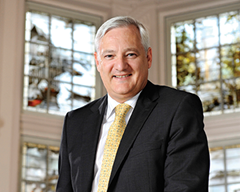Looking at the future through a ‘new lens’
 Shell CEO Peter Voser calls on policy-makers to seize today’s opportunities before energy and environmental problems escalate.
Shell CEO Peter Voser calls on policy-makers to seize today’s opportunities before energy and environmental problems escalate.
Firm and far-reaching policies can address the world’s resource and environmental stresses but the window of opportunity is shrinking. This is what emerges from a major, and timely, new report by Shell’s scenarios team, which explores different views of how the future might unfold to improve our understanding of global developments and the world’s energy system.
As the CEO of an international energy company, I especially welcome their latest analysis, given today’s uncertain business environment. The global financial crisis has ushered in an era of macro-economic volatility, and accelerated the shift in influence from West to East. Hundreds of millions of people are emerging from poverty, and the global population is growing by more than 200,000 people every day.
The New Lens Scenarios assess how these economic, political and social forces might play out over the 21st century.
One projection is that the world will build the equivalent of one new city of nearly 1.5 million people every week for the next 40 years. Above all, the scenarios reinforce the urgency of addressing the world’s resource and environmental stresses. Over the next seven years alone, the world could generate new energy demand equivalent in size to China’s entire energy system. The opening up of vast new shale gas and oil resources in North America should ease at least some of this pressure, especially if China and other countries with surging demand develop their own resources.
Meanwhile, greenhouse gas emissions are rising fast. On existing trends, the world will far exceed the average temperature rise of 2° Celsius regarded as the limit for avoiding the worst effects of climate change. If that were to happen, the pressure on the world’s water, energy and food resources would only intensify. These resources form a tightly woven network. Nearly all forms of energy production require water, energy is needed to move and treat water while producing food requires both energy and water.
The magnitude of these challenges means that we will need to address them intelligently and in unison. That calls for new and deeper forms of partnership between business, governments, academia and civil society. I’m optimistic that there are several areas where taking integrated action now could reap major benefits in the decades ahead.
One is city planning as many countries make the journey from rural to urban societies. Cities with a higher population density are more energy efficient than sprawling cities, because they encourage people to use public transport and make shorter car journeys. According to our experts, this could lead to the equivalent of a 15 per cent reduction in the average distance travelled by car passengers each year; that’s around 2,000km per person.
In one of our scenarios, intelligent urban planning in the world’s rapidly growing cities could also trigger the transformation of the entire global transport system over the next 50 years, by providing the infrastructure for a car fleet powered mainly by electricity, hydrogen and natural gas.
The sheer scale of energy demand means that fossil fuels consumption will continue to grow. Whilst one of our outlooks suggests that solar could become the largest energy source by the 2060s, in this analysis coal use will continue to rise for decades too despite being the biggest cause of CO2 emissions in the energy sector today. So displacing coal-fired power with natural gas, the cleanest burning fossil fuel, could make the most substantial contribution to reducing CO2 emissions over the next thirty years. Gas can also support the growth in renewable energy.
According to the scenarios, the world’s supply of renewable electricity could expand three-fold over the next two decades. But solar power and wind need back-up because they cannot produce electricity all the time. With energy storage technologies in their infancy, gas-fired power is well placed to do this job because it can be switched on and off quickly. Carbon capture and storage technology (CCS) will be critical in taking CO2 out of the power sector over the next 50 years. Our scenarios show that today’s demonstration projects must be backed with strong mandates and investment for CCS to realise this potential in the decades ahead.
By bringing our uncertain future into sharper focus, the New Lens Scenarios show how decisions today could prove decisive in tackling the world’s resource and environmental stresses. Policy drift and unbalanced regulation will simply mean higher greenhouse gas emissions and more pressing resource scarcity tomorrow. The time for action is upon us, if that window of opportunity is not to close for good.
Shell’s New Lens Scenarios are available on www.shell.com/scenarios





